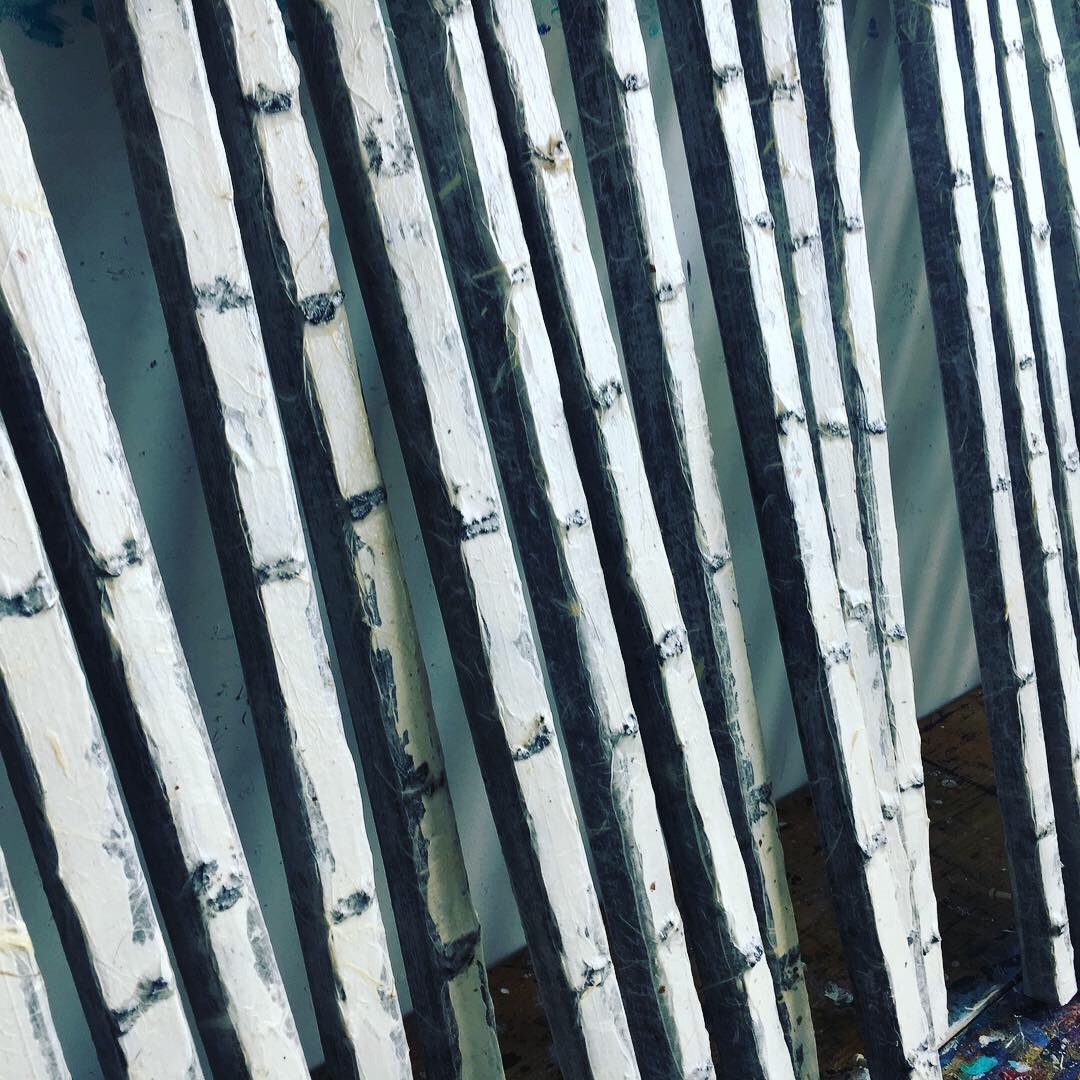Helping students through the process of thinking about a future career is no easy task. Sure, most of your students aren’t going to be artists, but there are some who will. How can you best prepare them for what lies ahead? To help answer this question, I spoke with working artist, Darren Jones. We discussed some of the soft-skills and habits of mind that contribute to a successful career in the arts.
Let’s Take a Look
About the Artist
 Darren is an abstract painter based out of Chicago, Illinois, and is celebrating ten years as a full-time professional artist. More specifically, his income to live depends on his work as an artist. His experience in the corporate world, prior to his art, has given him a unique perspective on building himself as a brand and business in art. As an emerging mid-career artist, Darren is established in certain communities around the country and emerging into larger entities, including internationally.
Darren is an abstract painter based out of Chicago, Illinois, and is celebrating ten years as a full-time professional artist. More specifically, his income to live depends on his work as an artist. His experience in the corporate world, prior to his art, has given him a unique perspective on building himself as a brand and business in art. As an emerging mid-career artist, Darren is established in certain communities around the country and emerging into larger entities, including internationally.
Helping a student to be a professional artist in the future is about more than technical skills.

Here are Darren’s 5 best tips for success.
1. Don’t knock math.
Without an assistant or agent, Darren handles all responsibilities of his business, including finances. His ability to track his expenditures and income in detail helps him make smarter and more intentional decisions like which shows to participate in and how to price his work. Being aware of other costs like travel, time, art supplies, etc., and monitoring them from year to year helps him set goals for the business and plan for the future.
Support Your Students: Have your students practice by using an art catalog to figure out how much they spent on a project. As an added bonus, this can also help reduce waste when students learn how paint costs impact your budget. Or introduce them to the idea of pricing their own art. You can find helpful information in the article, Teach Your Students How to Price Art.
Help your students see the value in their current math course and support your math colleagues. Even if you don’t think your students will need algebra, math teaches necessary skills for artists like numerical literacy, organization, and pattern recognition.
2. Be a people person.
Darren talked about the importance of selling art through the story of the work and himself as an artist. Buyers want to know who the artist is and why they create their work. Art is a conversation piece, and the owners want to be able to share the background of the painting. So, the ability for artists to connect with people, be friendly and approachable, and talk about their work is critical to their success.
Support Your Students: Create opportunities throughout the year for students to practice writing and speaking about their work to a variety of audiences. Inviting administrators, parents, or colleagues into the room gives students a chance to speak to new viewers. When doing small group critiques, intermix with another art class or have students work with a new group or peer. Similarly, have students support all of their work with artist statements—even when it’s not being displayed. Practicing writing about their work will help down the road when they are applying to shows or communicating electronically with buyers.
3. Ask for feedback.
With no art teacher circulating the room asking questions or providing direction, Darren uses a network of artists to get feedback on his work. Because he works alone in his studio, Darren typically sends images to a gallery or colleague with general and specific questions for guidance to move forward. His relationship and support of other artists allows this to happen and is necessary for his own growth.
Support Your Students: Help students to be more independent and proactive in asking questions and soliciting feedback. While it’s natural to walk the room and check-in with students, think about how you can get them to come to you or a peer.

4. Learn how to handle rejection.
Artists, like Darren, can show their work all weekend to a few thousand viewers and leave with nothing sold. While it’s important to reflect and question the work or the show, being patient with the process is one key to long-term success. Darren shared that even if a sale doesn’t result during a show, that doesn’t always mean it was a waste of time. It’s not uncommon for buyers to reach out as soon as the next day, or even months or years later, to purchase a piece from him. Sometimes buyers will follow an artist for years through social media before buying a piece. Staying positive is also important to not scare off potential buyers with negative facial or body language.
Support Your Students: After students are engaged in art, help them experience rejection. That might sound like a negative approach. However, students going through rejection in a supportive environment can help prepare them for when they’re alone in the future, and the stakes are higher. If your top student is always picked for a display or art competition entry, consider leaving them out to gain that experience. Or if a student constantly receives positive feedback, provide them with some really strong constructive feedback from yourself or another artist or art teacher. The goal isn’t to deter students from art; it’s to prepare them for a future in artmaking where they won’t always feel like the best in the class. Use your knowledge about each student as an artist and person to determine who is ready for this level of feedback.
5. Try to cultivate more confidence and less ego.
Darren’s birch tree paintings are a winner and sell often. They are unique, intriguing, and show beautifully. So, Darren will keep making them as long as they continue to sell. After all, Darren’s art is a business in many respects, and just like a retail store, you continue to offer what is selling. This approach of replicating pieces can challenge an artist’s creativity and evolution. Darren shared how he balances creating commercial work to sell with newer paintings that allow him to progress and experiment with new ideas. It’s Darren’s self-confidence that manages this balance and leaves him satisfied as an artist and business owner. The same applies when working with buyers on a commissioned piece, a practice some artists refuse. Darren shares the importance of thinking about the consumer and not only your wants as the artist. He says if you’re only thinking about yourself, your career will be short-lived.
Support Your Students Challenge students to think beyond themselves and practice selflessness by creating work for others. Authentic art experiences with an artist/client dynamic can teach students to handle others’ opinions and judgments during the artmaking process. Also, continue to push students to take risks and approach new styles. These experiences teach that being an artist is not about having full autonomy over what you create. Similar to Darren, sometimes you have to make something to pay the bills.
Darren’s experiences highlight the skills and abilities necessary to be a successful artist beyond creating engaging and beautiful work. Help your students prepare for the future by creating opportunities to build on their soft-skills and behaviors while developing the whole artist.
What other skills can we help students develop that will make them better artists in the future?
What else can we learn from professional artists to teach to our students?
Magazine articles and podcasts are opinions of professional education contributors and do not necessarily represent the position of the Art of Education University (AOEU) or its academic offerings. Contributors use terms in the way they are most often talked about in the scope of their educational experiences.





